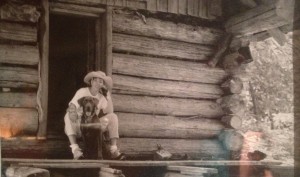Food. Shelter. Water.
What else do we need? What else do we rely on to do more than just survive?
Beauty. Love. Community.
Comfort. Security. Health
A good home combines all of these things.
I’ve spent my life trying to reconcile my wild creative urges with a very practical side and my screaming need to be an entrepreneur, able to collaborate with creative, practical and entrepreneurial types on as many interesting projects as possible. I’ve been self-employed since I left high school, running small businesses designing and drafting clothes (practical 3-d sculpture), advertising, marketing, and packaging (not so practical), and finally houses. The ultimate in practical 3-dimensional sculpture. I love houses. Houses, like clothing are as constrained as haiku. There are elements that must be included, form that must be followed, but what you do within those constraints…
A house always has certain forms, and those forms follows function.
Or maybe it’s the other way around. Chicken, meet egg.
The thing is, form and function need to be intertwined and balanced in good design. This is where an eye for beauty and hard-core science come together. Or not. We’ve all been there, in the house or apartment or hotel or business that has irrational design features or weird-ass problems with lighting, too much heating, too much cooling, not enough attention to sound baffling, windows placed with no consideration of viewplanes (from inside or outside!!).
I don’t want to focus on the porn of bad building. There’s a lot of that out there, while it’s hella fun to point out, it’s harder to point out what works. Because what works usually disappears from our sight, elegantly and silently. The quality of what works to make us feel welcome, holy, cherished, comforted and comfortable combines irrational wisdom, creativity and intuition (a ‘romantic’ outlook) with science, reason and technology (a ‘rational’ outlook).
The point that Robert Pirsig demonstrates in his book, Zen and the Art of Motorcycle Maintenance: An Inquiry into Values, is that rationality and Zen-like “being in the moment” can harmoniously coexist. He suggests such a combination of rationality and romanticism can potentially bring a higher quality of life. I read that book when I was in my late teens, and the ideas have stuck with me ever since.
For me, that looks like buildings that uses very little energy to heat or cool, uses appropriate technology, incorporates ways to supply food, water and energy, and does it all in a way that is elegant, replicable and practical. Other authors and many designers, architects, and builders have thought and written about this, and their ideas struck a chord with me as well: More Houses and Other Garbage, A Pattern Language, The Timeless Way of Building, On Adam’s House in Paradise, Anarchist Housing, Architecture Without Architects, and the first Permaculture book.
It’s time to smoosh these together with what we know now about building science, and amazing new technologies that allow us to sidestep the challenges of the past. There’s a whole lotta cool stuff out there that people are using in beautiful ways. Let’s explore all that technology with a poetic eye, and all of that beauty with a rational mind.
The lamp once out
Cool stars enter
The window frame.
– Natsume Soseki

No Comments Yet